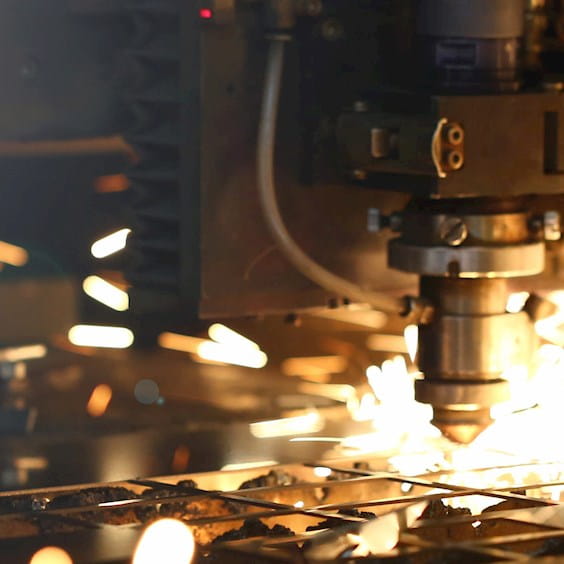10 principles for building a nimble, digital culture in manufacturing
Digital technology can be a vital tool for workers at all levels, but demonstrating its value is crucial to its acceptance
This article was originally featured in the Manufacturing Leadership Journal in April 2021. ©2021 Manufacturing Leadership Council, a division of the National Association of Manufacturers. All Rights Reserved.
Most of us were happy to turn the page on 2020 and look ahead to more positive times. In the National Association of Manufacturers outlook survey for the fourth quarter of 2020, nearly three in four respondents said they had regained a positive outlook for their company. Yet issues persist. In West Monroe’s first quarterly executive poll of 2021, a majority of executives conceded that they expect to be in a recovery mode until mid-to-late 2021.

Companies focused on a return to “normal” may never fully recover. Consumer behaviors, expectations, and spending patterns have shifted. Supply chain disruption and global tensions remain major factors. And the course resolution of the pandemic is far from clear. Executives must get comfortable managing in a fluid environment much longer than they expected. Fluidity may very well become part of the new normal.
Sustaining Newly Found Momentum
Digital transformation has made a difference in this highly unpredictable environment. Companies that navigated the crisis well relied on and trusted technology to keep their operations running. They were able to run leaner and collaborate effectively across functions. As a result, they could respond faster to support workers and customers during the crisis.
For many organizations, the pandemic has been a catalyst for accelerating digital transformation. Companies digitized many activities 20 to 25 times faster to address workforce, supplier, and customer constraints. This is good news.
We’ve also seen that agility and rapid change is possible when people perceive the need for it. But how can we instill that same sense of motivation for change in more “normal” times? And how can we use it to create sustainable agility – becoming an organization that can learn and think on the fly and respond faster to new or unexpected forces?
Manufacturers still have a long way to go to reach Industry 4.0 goals. For example, while 82% of manufacturers have either implemented, piloted, or considered industrial Internet of Things (IIoT) solutions, 70% haven’t moved past a pilot project. To increase agility, resiliency, and ability to respond to continuing fluidity and uncertainty, manufacturers need to double down on Industry 4.0 technologies that produce more data and insight and enable faster, better decisions.
But it will take more than technology. People embracing it will be the key to realizing the benefits of modernization. While retooling operations with modern technology, you’ll need to retool your culture for modern ways of work.
Following are 10 tips to nurturing a nimble, I4.0-ready culture
1. Address operational issues before introducing new technology
Before investing in transformative technologies, first determine the areas where you need to increase value and/or reduce costs. This should start with a broad look at financials and performance. Think about the big issues that affect the P&L, cost of goods sold, and baseline key performance indicators. Examples might include output capacity, labor efficiency or utilization, excess inventory, unplanned downtime, high scrap rates, or increasing reactive maintenance expenses.
Then determine the insights needed to address the issue. This will guide investments you make in transformative technology. It also helps tell a compelling story about why change is necessary. You will need that story to engage employees in change (see No. 4 below).
2. Provide strong, continuous, top-down support for change
This is imperative for any sort of organizational change, and it should be central to your Industry 4.0 strategy. Transformation is a team sport. These types of seismic strategy shifts can’t just be led by a small digital or technology team within a larger organization. Leaders need to clearly and repeatedly articulate the vision for where their company is going and be prepared to champion digital strategies from the top.
3. Preserve institutional knowledge and embed it in new automated processes
Many manufacturing operations have the benefit of employees with career-long experiences in a particular plant or operations. They possess insight that can save companies from big issues: For example, when an experienced machine operator hears “that vibration” in the motor and knows the machine is likely to fail. But what happens when that employee retires or is unavailable? This is concerning since nearly a quarter of the manufacturing workforce is over the age of 55.
Modern technology allows organizations to embed this type of knowledge into automated processes, such as sensors to “listen” for the same signs of future trouble. It is important to engage with the technicians who have this experience and knowledge to get their help in developing the automation while they are still available to do so. Involving people in designing the change or issue solution that could impact them leads to greater acceptance of new ways of working.
4. Make sure people understand the “why” and “WIIFM”
Communication from leaders should emphasize why things are changing. Value articulation is key: Successful integration begins with a clear articulation of the tool’s value, both for the organization and for the employees who use it. Communicating primarily about the organizational benefit — “it allows us to run more efficiently” —leads to a greater fear that technology is replacing jobs and/or people won’t have the skills to succeed in a modern factory. Many companies overlook the need to help employees understand “what’s in it for me” (WIIFM).
Employees need to internalize and be able to answer the question, “How will this make my job better and easier?” Storytelling and training that are relevant to the specific level or role can alleviate fears and speed adoption. For example, communication should show a line foreman how to interpret and use data rather than relying on observations, then clearly demonstrate how that data will help achieve better specific goals or performance metrics.
5. Trial new ways of collaborating to promote essential integration
Successful transformation requires greater integration of OT and IT. These technologies still reside I siloes at many organizations. Overcoming this requires changing how the enterprise views divisions between teams and functions.
One way to tackle this is to employ multidisciplinary project teams that work through the lens of an experience rather than a function — for example, developing a new smart product. The team’s mission is to understand how stakeholders will use the new product and continuously improve the experience derived from it. The team might include representatives from the product team, field services and sales, as well as software developers and a UX/UI designer. The focus should be on an initial, short-term solution that can be developed quickly and then improved over time. The team should have the autonomy to move at speed and know that it is okay to fail — but fail fast and then course-correct.
According to Harvard Business Review: “When implemented correctly, they (multidisciplinary teams) almost always result in higher team productivity and morale, faster time to market, better quality, and lower risk than traditional approaches can achieve.”

6. Design tools that are simple and personalized to the role
Introducing new digital technology provides the opportunity to design it from the outset for optimal integration with employees’ roles. You want employees to view their new tools as part of their personal arsenal for success instead of as inhibitors. There are some principles for doing so.
Keep the design simple and intuitive. The apps that your employees use in their personal lives allow them to perform tasks quickly and effortlessly. Their work tools should do the same.
Personalize the information and interface by role. The focus should be on delivering the right information to the right people at the right time. If the information provided is too broad, people will tune it out and go back to what has worked for them in the past. If you are developing a screen for an operator running a piece of machinery, provide only the data that person needs to achieve production goals.
Finally, provide sufficient training and be prepared to adapt or update interfaces continuously based on usage and user feedback.
7. Build trust in data and predictive analytics
If an organization wants to be data-driven, people need to adopt a data-driven mindset. But first, they need to trust the data. That is easier said than done amid profound changes and ingrained ways of working. There are a few ways to tackle this.
First and foremost, you will need sound data governance — the processes for maintaining master data quality, availability, and security. Leadership needs to trust and demonstrate trust in the data. Just as important, employees need to understand that master data changes are based on purposeful and defined processes.
Some organizations find it difficult to get traction for data governance initiatives because it is difficult to quantify the ROI. However, assessing master data and its fidelity should be a priority and pre-requisite for driving I4.0 transformation. Issues with data governance result in inconsistent data sets that can have many indirect impacts, a notable example being the increased probability of false positives that result in making fixes that are not required. These types of issues could erode trust in the data and set transformation back
8. Incentivize change
Measuring what matters and recognizing and rewarding effort encourages people to focus on the right things and instills accountability for new ways of working. Performance management processes should be aligned with transformation, with organizational goals translated into individual performance metrics. But little things can go a long way too. For example, if you want to reinforce correct data entry in a new system, then find ways to reward it – with additional time off, a team recognition party, or a leader board that involves a prize.
9. Determine the new skills you will need – and then build, borrow, or buy them
New perspectives and skills will be necessary for an automated future. In particular, manufacturers will need people who understand how to analyze, integrate, and interpret data from different sources and turn it into actionable insights. This will require people with data science or engineering backgrounds, as well as an understanding of both operations and business strategy. It is an evolving skillset in manufacturing and one that is holding many companies back from digital transformation. For example, 40% of manufacturers say they aren’t implementing IIoT due to a lack of required skills.
Early on, it will be important to assess current skills, identify gaps, and consider how you will fill those gaps for skills and capabilities that increase resiliency and help you hedge against an uncertain future. Options include:
- Building capabilities internally – for example, creating an innovation hub to lead rapid prototyping of new capabilities
- Borrowing essential capabilities via consultancies
- Buying new capabilities through strategic acquisitions
10. Lead the next generation of talent to manufacturing
In West Monroe’s survey, The Future of Manufacturing in Minnesota, 60% of young Minnesotans said they didn’t believe the manufacturing industry could offer a long-term career. Only 30% believe its wages are competitive, and just 25% said manufacturing leverages cutting-edge technology.

Those who have spent their careers in manufacturing aren’t helping, either. In a 2017 National Association of Manufacturers report, only 3 in 10 parents said they “would consider guiding their child toward a career in the field.”
Manufacturers need to be more assertive about reversing these perceptions. The modernization of manufacturing operations and introduction of Industry 4.0 technologies can help, particularly emphasizing the shift to using data and predictive analytics to manage and improve operations.
Take Charge of Change
Whether it’s new competitors, changing consumer expectations, environmental issues, or the next public health crisis, we don’t know what’s lurking around the corner. But we do know this: Unexpected situations will continue to challenge us, and the companies with agile, adaptable cultures will be the ones best positioned to navigate through the unexpected.
We also know there will be lasting changes from the crisis of 2020, chief among them a different workplace. In our Q1 2020 quarterly executive poll, just 47% of respondents said they expect to have workforces on-site most or all the time when it is safe to return to work. Planning for changes in the workplace provides a great opportunity to renew your focus on culture.
Cultural change doesn’t happen on its own. It requires purposeful and ongoing management, through a plan that encompasses every part of the organization from the C-suite to the shop floor. Establishing a program management office dedicated to cultural change and accountable for delivering it can be an effective way to coordinate the many interrelated activities involved – not to mention, ensuring sustained focus on the goal of fostering an agile, adaptable, M4.0-ready culture.



